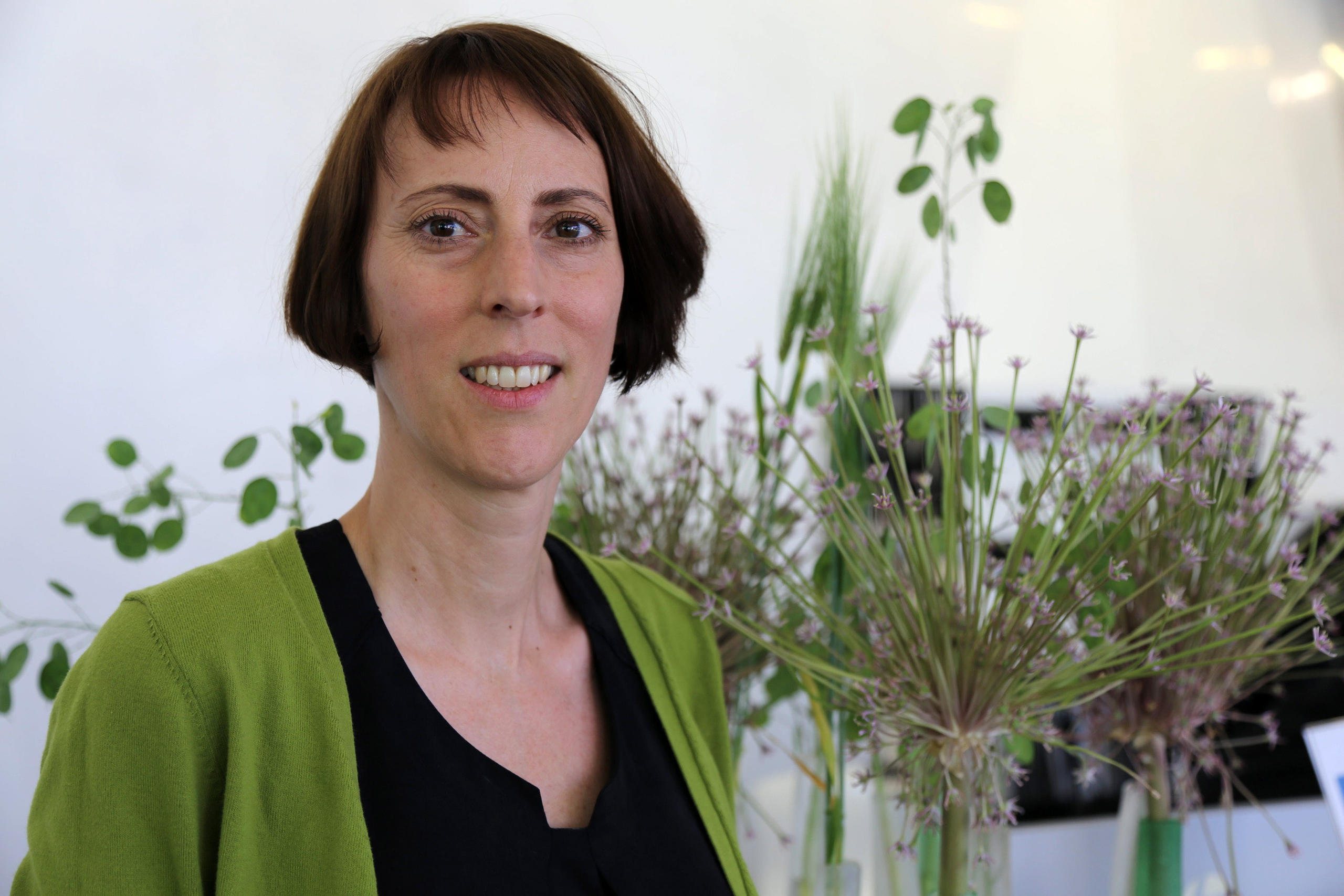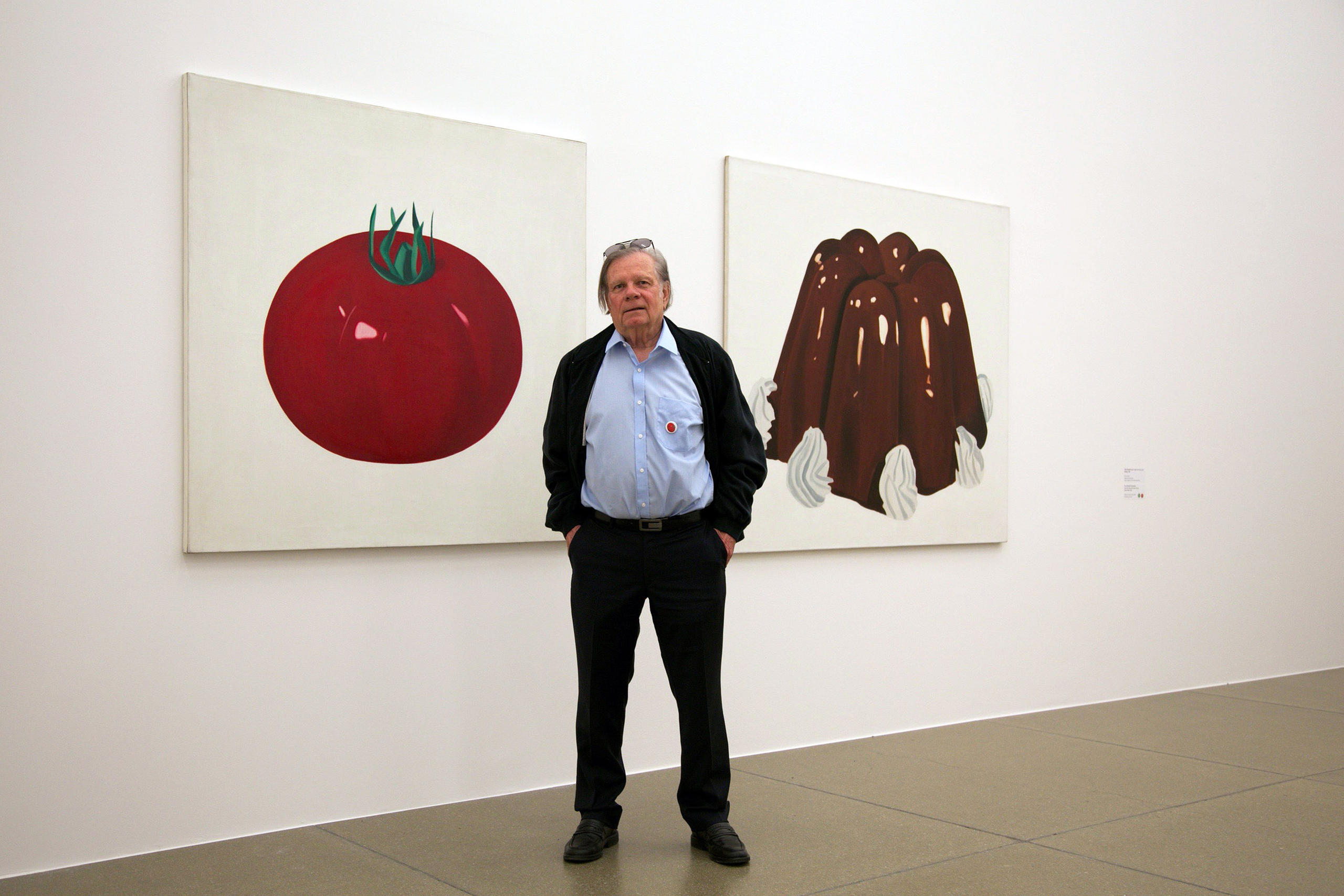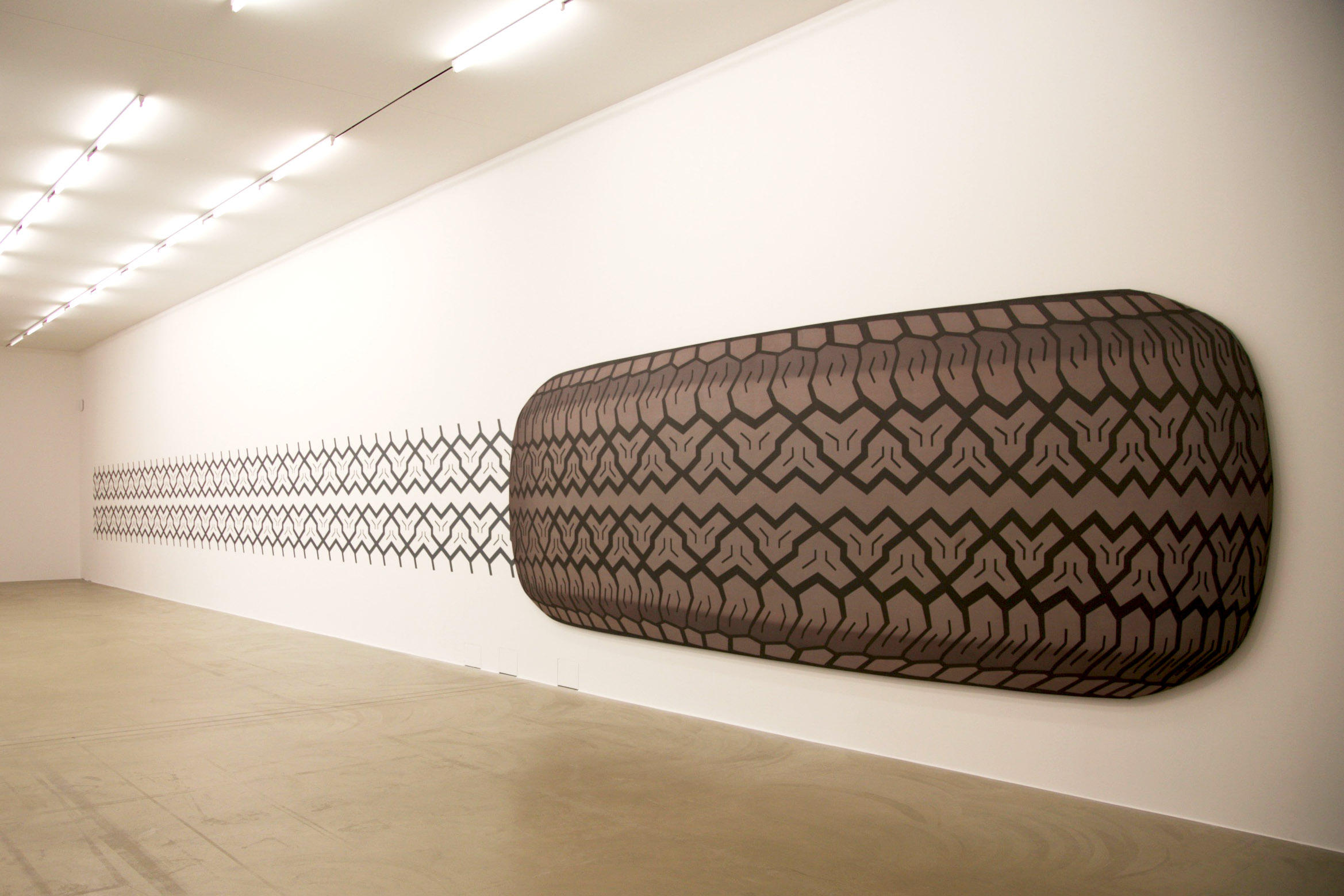Peter Stämpfli: the tyre as a life’s work

Swiss artist Peter Stämpfli is one of few pop artists with an international reputation. Reflecting on his career, he explains how interpreting the humble car tyre over and over again helped him find success.
StämpfliExternal link’s works are featured in the current Swiss Pop Art exhibitionExternal link at the Kunsthaus Aarau. It focuses on the period between 1962 and 1972 when pop art, which drew inspiration from popular and commercial culture, was at its height.

“He was one of the earliest Swiss artists to get into pop artExternal link,” says co-curator Katrin Weilenmann. Museums around the world, including New York City’s MoMaExternal link, have featured Stämpfli’s pieces.
At nearly eighty years old, the sprightly artist is still working and recently spoke about his work at an event in Aarau. He divides his time among Paris, Bern and Sitges, Spain, where he has a modern art museumExternal link.
swissinfo.ch: Pop art is often considered American or British, but not necessarily Swiss. Why?
Peter Stämpfli: The whole history of pop art is a rather long one to explain. I moved to Paris in 1959, and this was not really a pop-friendly city. All my friends there were into the French artistic movement, narrative figurationExternal link [which had links to pop art]. The term pop art comes from the US and England. As a Swiss artist, I felt very isolated in Paris. My temperament was rather more suited to Anglo-Saxon pop art. In 1963, I was asked by Switzerland to represent it at the Biennale in Paris and I was able to show my first pop pictures there. That meant simple paintings, like photographic shots, of objects: a fridge, a telephone, car tyre, a hand holding a cigarette, or glass or a hat.

All very simple and out of its context, so on a white background – or as I like to call it a white room – and far from any stories, compared with the French artists who took the same subjects but interpreted them in their own way.
I personally got to know artists such as [the Americans] Roy Liechtenstein and James Rosenquist. When I painted a washing machineExternal link in 1963, I got a telephone call from Life Magazine in New York asking me if I knew Liechtenstein’s Washing MachineExternal link. I said no I didn’t. They said that he had done a similar work and that it dated from the year before. When I visited Liechtenstein in Long Island, I took my catalogue with me and showed him my work. It’s very interesting that it was the same topic, but conceived so far away from each other, on two continents. That was the issue: photography and the daily object were coming back into art. The 1963 Biennale was all about lyrical abstractionExternal link. The only other pop artists there were the English: Jones, Blake and HockneyExternal link, who were also doing real photos or interpretations of photos.
swissinfo.ch: How did you get interested in the tyre as a basis for your work?
P.S.: For the first four to five years, I painted objects from daily life. People said, well this isn’t really art. My answer was: this is exactly what you have in your laundry, you have a car, it has wheels, and these have tyres. This is what an artist does, he records our environment, like a photographer.
Since 1969 I haven’t painted or created a work on any other topic. Peter Stämpfli on his fascination with tyres
After this came cars, or rather car parts. As a geometrical painter, wheels fascinated me: the geometry and the repetition of the structures. 1969’s tondo wheelExternal link was an isolated wheel, two metres in diametre. It was like a drawing that had been produced on a drawing board, it was no longer inspired by the light and shade of a photographer [like my previous wheelsExternal link]. That was the wheel for me. The next step saw me go into the wheel like a photographer using a zoom. I homed in onto the top of the tyre, the half moon. This picture from 1969 was called Grand PrixExternal link. It was my first tyre picture. And since 1969 I haven’t painted or created a work on any other topic.
swissinfo.ch: What is your fascination with tyres? What message do you want bring across?
P.S.: There’s a fascination and an inspiration. If an artist looks for inspiration from the same topic for 50 years and keeps developing it without repeating it, then it’s not repetition. First there was the tyre and then the tyre track, that means the positive and the negative. Then there was just the imprint on its own on the floor. For example, at this year’s Art Basel UnlimitedExternal link art show I have a vertical six-metre high tyre with 20-metre imprint on the floor on show. In this exhibition, it’s a horizontal tyre with an imprint on the wall.

After that there are details of the imprint, going towards the abstract, although none of my pictures are fully abstract.
Over 50 years, I have developed the concept further by using all different types of materials and possibilities of expression, like drawing, charcoal, watercolours, pastels and sculpture. I have made huge sculptures in Taiwan, Korea, Portugal and FranceExternal link: they can be up to 10 to 12 metres high, a piece of tyre, very colourful, in redExternal link. It is always linked to the tyre. I haven’t made anything up, I simply interpret it.
The Swiss Pop Art exhibit
Swiss Pop ArtExternal link runs at the Aargauer Kunsthaus until October 1. It features 270 paintings, works on paper, sculptures, films and objects from 50 artists.
“You have a whole range of artists in the show, from Peter Stämpfli, Franz GertschExternal link and Markus RaetzExternal link who are very famous nationally and internationally, to artists important for region like Max Matter and Markus Müller and then those who are less known at moment,” co-curator Katrin Weilenmann says.
She thinks that the moment is right to host such a show because the Swiss art movement has been active for half a century. It has not been researched much, she says, and there is a general interest in pop art as evidenced by shows at the Tate Modern in London and in Germany. Many of the Swiss artists form the pop art period are now older and it’s important to hear their voices, Weilenmann added.

In compliance with the JTI standards
More: SWI swissinfo.ch certified by the Journalism Trust Initiative











You can find an overview of ongoing debates with our journalists here . Please join us!
If you want to start a conversation about a topic raised in this article or want to report factual errors, email us at english@swissinfo.ch.